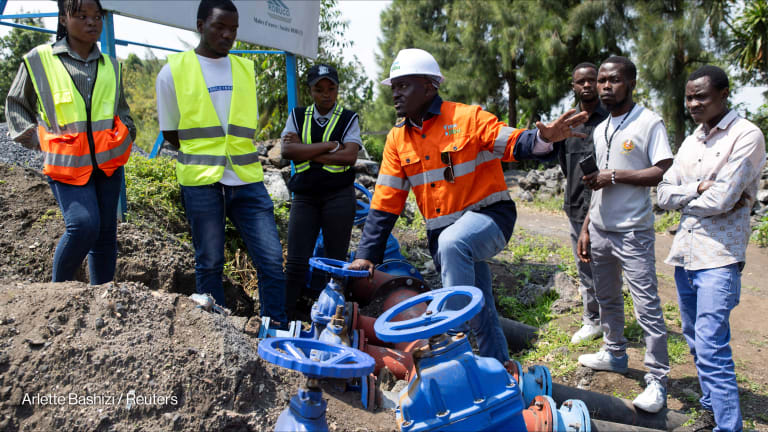
Rajiv Shah announced Wednesday (June 20) that the U.S. Agency for International Development was increasing aid to Yemen by $52 million this year to reach a total of $175 million.
The funding includes:
Up to $22 million in post-conflict community reconstruction support in Abyan and Aden.
Up to $4 million to help improve government capacity and the national dialogue process.
Up to $4million to support the Supreme Commission for Elections and Referendum and associated electoral bodies, civil society, and stakeholders in the 2013 constitutional referendum and 2014 elections.
$19.3 million in food aid.
$2.67 million in emergency aid for internally displaced people and their host communities in southern Yemen.
Shah made the announcement on his first visit to Yemen. In addition to President Abed Rabbo Mansour Hadi, the USAID administrator met with Foreign Minister Abu Bakr al-Qirbi, government counterparts, private sector and civil society leaders, international donors, and humanitarian and development officials, according to a USAID press release. The agency said the additional money demonstrates “the Unites States’ commitment to a comprehensive and long-term partnership with the Yemeni people.”
The United States stated in May that it would give at least $147 million to the country in 2012, and possibly more if needed. Arab and Western donors pledged $4 billion that month to support development and stabilization projects, with the bulk of that money coming from Saudi Arabia. The Yemeni government was purportedly seeking nearly $8 billion in aid.
In 2010, the last year for which data from Organization for Economic Cooperation and Development is available, Yemen received less than $1 billion in foreign assistance, with Development Assistance Committee countries contributing just over a third of the total. The United States alone has requested $76.7 million for 2013 assistance, with about a fifth destined specifically for economic development.
Shah’s visit comes as Islamic charities become bigger players in development aid, and as concerns over terrorism and lawlessness in Yemen remain high following a violent political transition in February. Hadi told Shah that recent fighting had led to mass displacement as well as big losses in infrastructure and agriculture that demanded international assistance, according to national news agency SABA. Forty percent of people living in Yemen earn less than $2 a day, and the World Food Programestimated this month that around 5 million Yemenis required emergency food aid.
Find USAID projects & tenders in Yemen. Read more development aid news online, and subscribe to The Development Newswire to receive top international development headlines from the world’s leading donors, news sources and opinion leaders — emailed to you FREE every business day.








